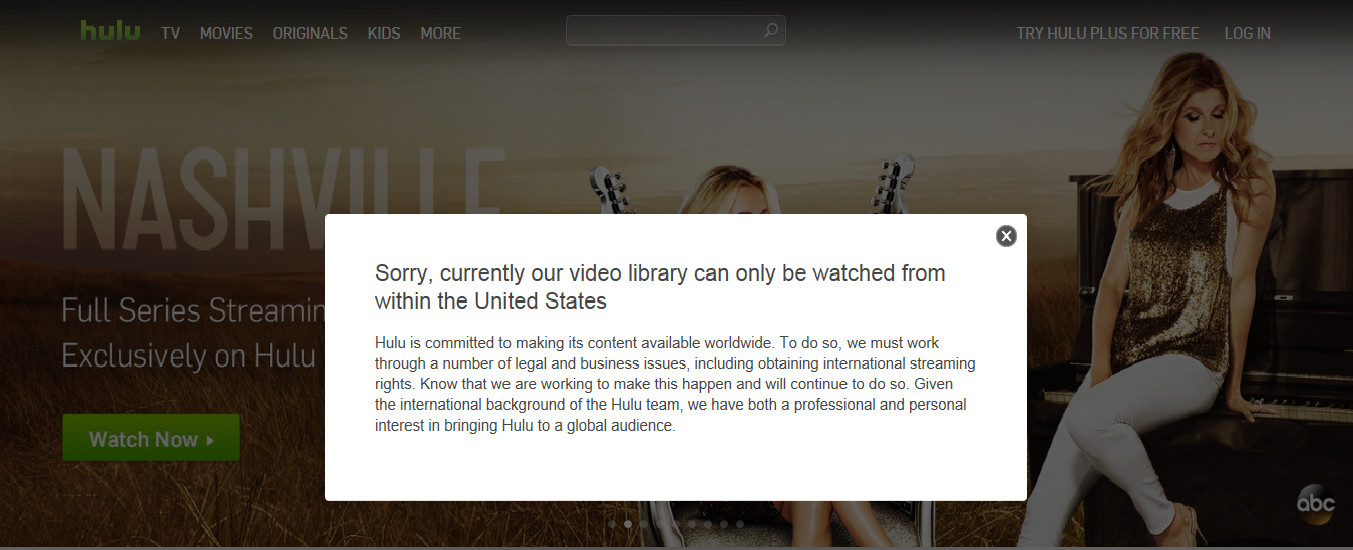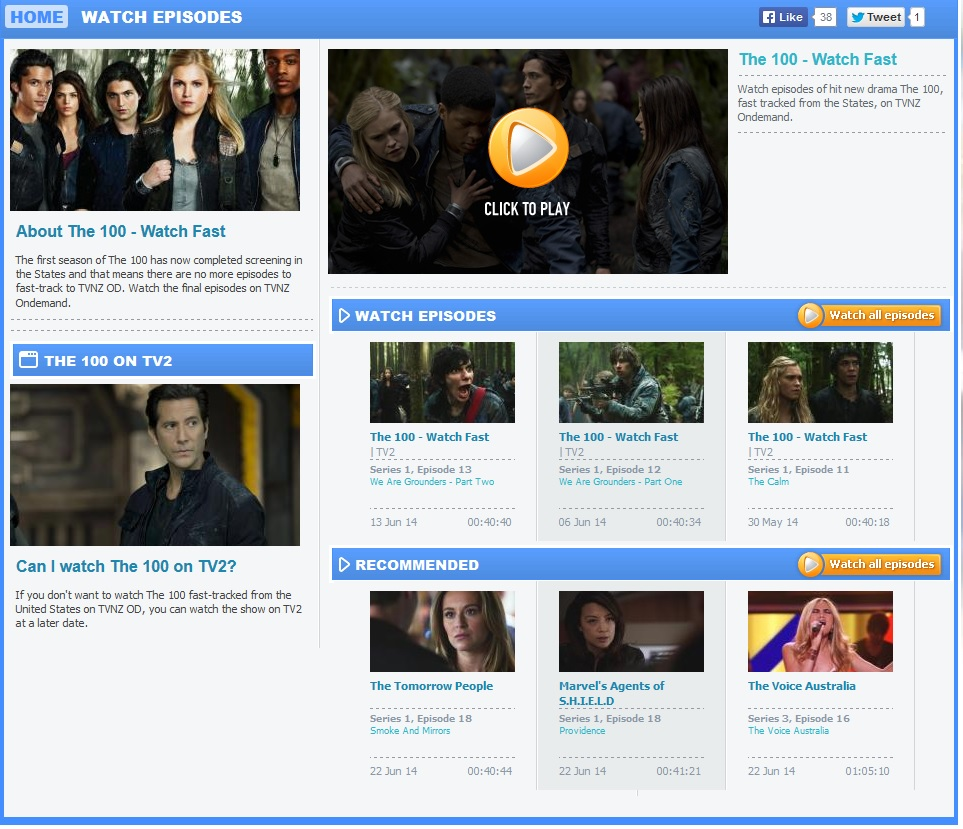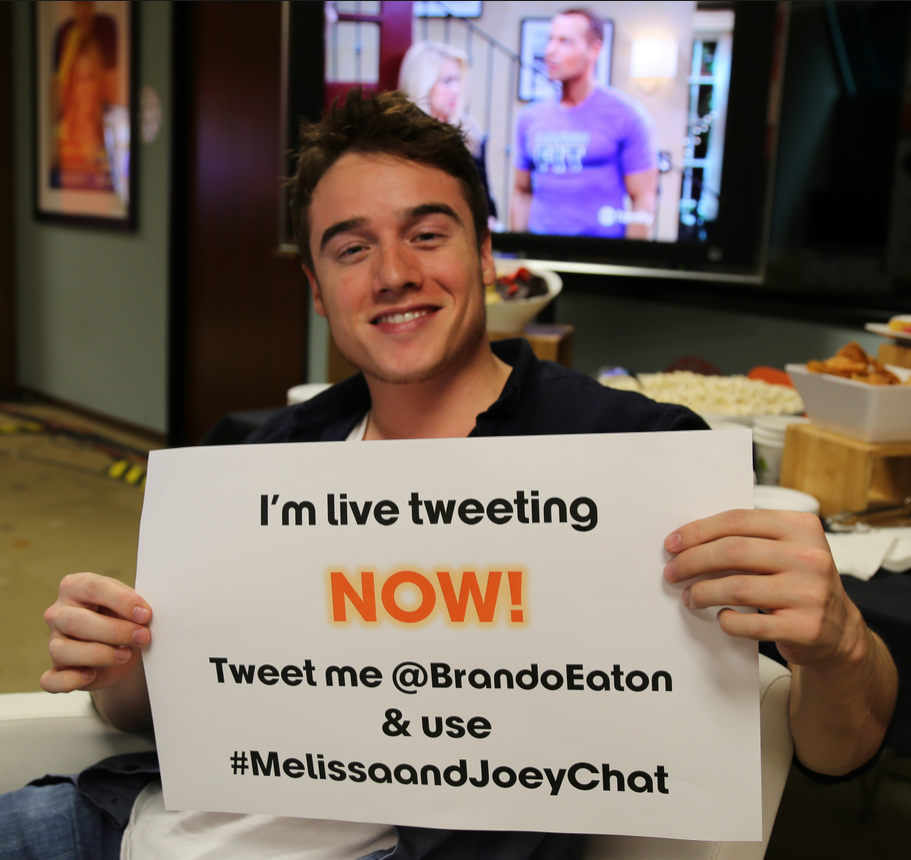This Content is Currently Unavailable: The Tyranny of Digital Distance, Updated
Mark Stewart / University of Auckland

In 2014, in New Zealand (and, I believe, similarly in Australia), we can reconsider this formerly unfulfilled expectation of near-synchronous viewing. Many major networks have taken steps to reduce the delay in the distribution window while also increasing the level of offering of digital content on demand. Several recent high-profile US dramas have aired in New Zealand within days of their US broadcast (two notable examples, Game of Thrones and Homeland, have aired within 24 hours of original US broadcast), in an attempt to bring audiences back to the live viewing experience. These moves have been greeted warmly by New Zealand audiences, and anecdotally have encouraged some viewers back to watching the broadcast. However, these near-synchronous broadcast windows work far better for premium cable series than they do for traditional network programming at http://samedayessays.org/thesis-proposal-writing/. Cable series are much less likely to be cancelled mid-season, to have weeks where they are not broadcast, or to go on extended hiatus. New Zealand audiences have previously not been used to these sort of vagaries, as the formerly extended distribution windows allowed local networks to air US content without breaks, and choose series for broadcast that had already been ordered to full season3 .
In addition to these reduced windows, the major television networks have also identified specific programming that they release on demand first, with the understanding that the shows will appear on the broadcast schedules at an undefined point in the future. The Originals is now airing on New Zealand broadcast television, but the network that has the New Zealand broadcast rights, TVNZ, began releasing the episodes on demand on a weekly basis not long after they initially aired in the US. A similar approach was taken with the CW’s The Carrie Diaries and The 100.

These steps are an active attempt to retain viewers who might otherwise be lost to illicit means of access, such as BitTorrent or streaming. Provision of rapid access to content is seen to be one way of reducing the need for audiences to search for their preferred shows outside of ‘approved’ avenues. However, I do not believe that this can be seen as having solved many of the issues raised by Leaver. Even if this near-synchronicity has been at least partially achieved, I suggest that the window of relevance of content access has shrunk even further. With many shared moments of fandom occurring via social media sites assignment online such as Twitter, Tumblr, and Facebook, the viewer runs the risk of being spoiled if they are even hours late in engaging. While there are relatively accepted protocols for the provision of spoiler warnings, or the avoidance altogether of such discussions, these mostly only apply to the three hour window between east and west coast broadcast in the US. Once the west coast broadcast is complete, many American users are far more lax with their warnings, as ‘anyone who really cared would have watched live’4 . In addition, marketing campaigns that invoke the audience, such as Alternate Reality Games, usually require a closer level of contemporaneity than is possible for global viewers, meaning that at best, international fans can be spectators rather than active participants5 . This symbolic erasure of international viewers within fandom can mean that even with decreases in wait times, any delay is seen as symptomatic of the irrelevancy felt by international fans.
This ‘near-synchronicity’ also fails to allow for fans to engage with the live conversations which have become common among online fan communities. Phenomena such as live-tweeting series as they air means that near-synchronous is not close enough; by not viewing the content ‘live’, fans are missing the opportunity to participate in the temporal community that surrounds it. This exclusion is compounded by the fact that when so much viewing is being done ‘on demand’ in some form, rather than at a specified, albeit delayed, broadcast time, international viewers are unable to create their own local viewing communities. Interestingly, New Zealand fans of Supernatural have begun to live tweet the delayed broadcast episodes in New Zealand, often three to four months after they have initially seen it, as a way of developing a local viewing community even if the episodes are not new to them6 . However, given that many of these viewers have already seen these episodes through other channels, this is an affectively different experience. In addition, this still does not allow for experiences such as ‘tweeting with the stars’, when actors or series creatives provide a pseudo-commentary live on Twitter during the broadcast.

[youtube]http://www.youtube.com/watch?v=d458sm5ToWk&feature=youtu.be[/youtube]
I am not convinced that there is a solution that will provide everything that fans actually seek. The standard call is either for networks to broadcast the content sooner, making international audiences subject to the vagaries of the US network system, or to make the content available legally on demand, reducing the possibilities for fans to be part of a synchronous viewing community. While some fans have turned to illicit live-streaming sites in an attempt to access the content in a timely fashion and to be able to engage with the broader viewing community, this often means needing to be available to view the content during the middle of the day, not something that is feasible for large portions of society. Any of these options solve one problem with book report help, but create another. But does this actually matter as much as we might think? Time Warner’s CEO Jeff Bewkes is on record as saying that there are enormous benefits to HBO from piracy of Game of Thrones7 . Is television piracy the concern that it is sometimes made out to be, and is there any good solution? Will piracy only ever be the purview of a select group of viewers, and what value is lost with them? The tyranny of digital distance lives on, and may not be as easily solved as it might have initially appeared.
Image Credits:
1. Content Unavailable
2. TVNZ On Demand
3. Live-Tweeting
Please feel free to comment.
- Leaver, Tama. “Watching Battlestar Galactica in Australia and the Tyranny of Digital Distance.” Media International Australia, Incorporating Culture & Policy 126 (2008): 145. Print. [↩]
- Leaver 146. [↩]
- As more viewers begin accessing content near-synchronously, New Zealand audiences might begin to adapt to the variances of US broadcast schedules. This was highlighted recently when numerous New Zealand fans expressed confusion on Twitter when an episode of Game of Thrones did not air as expected in the US, due to the Memorial Day weekend public holiday. [↩]
- This is representative of the sorts of sentiments that appear on message boards and social media in discussions of spoiler culture. [↩]
- These would be exemplified by The Lost Experience, Heroes360, or campaigns for Game of Thrones such as #RoastJoffrey. [↩]
- The hashtag #SupernaturalNZ is used, along with a hashtag of the episode name, so that those who are not watching live but have seen the episode previously can also follow. [↩]
- Hickey, Walter. “HBO: We Know You’re Pirating ‘Game Of Thrones’ And That’s Fine.” Business Insider Australia. N. p., 9 Aug. 2013. Web. 23 June 2014. [↩]
Both relevant and timely. No pun intended. I enjoyed you article very much. Am always seeking out foreign broadcasting like New Zealand and Australia. At least 30% of my viewing time is Canadian and British, if not more.
Very concise and well written. Would like to see more. Thanks from an ally just a hair NW of Auckland. An exquisite country you are so lucky to be blessed enough to reside and enjoy.